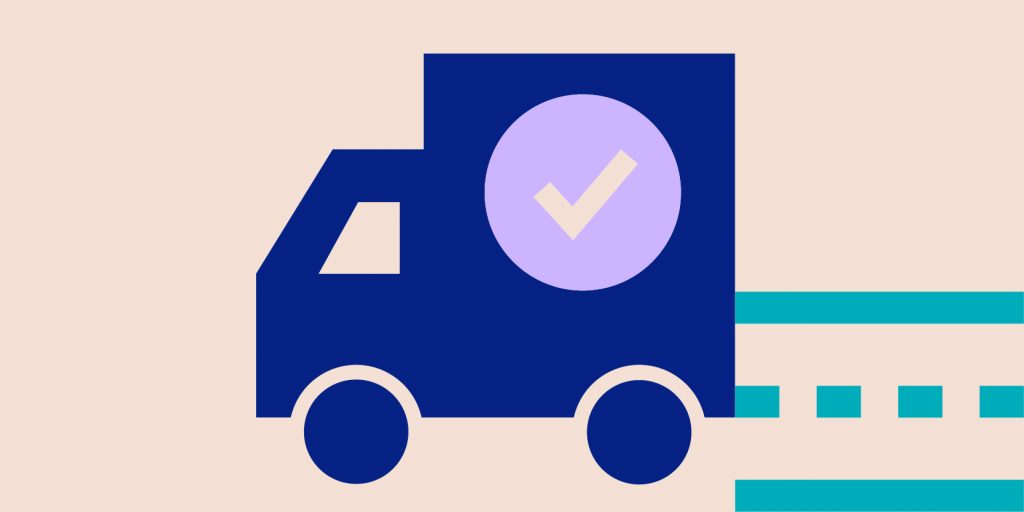If it’s finally time to start planning for your big move, you’re likely equal parts excited and unsure where to start. Moving everything you own from one place to your new home in one day is a task that takes planning and some serious strategizing. This moving checklist will help guide you through the job with ease. And by the way—congratulations on your new home!
A smart moving checklist
-
Weeks ahead of Moving Day
- Set your moving budget. After your down payment and closing costs, make sure you have room in your budget for your first mortgage payment and any immediate repair needs, and then determine how much you have left over for your move. Depending on your closing date, you might have a month before your first mortgage payment is due, so you could plan your moving budget around the funds freed up from not having a housing payment that month.
- Determine your move day. The day you close on a home is mostly filled up with paperwork, so decide which day after that one is best for your move. Consider that movers can be busier (and more expensive) on weekends and over holiday breaks. You can now assign dates to all tasks on your moving checklist based on your big day.
- Price out professional movers or rental trucks. If you decide to hire movers or need to rent a truck to do the move on your own, check out your options carefully. Check out online reviews and ask friends and family for recommendations. Call multiple movers and truck rental places for quotes.
- Schedule movers or rental trucks. If you find a mover or rental truck that fits your budget, schedule it as soon as possible. Closely review your contract before signing, and keep a copy handy for your moving day.
- Declutter, sell and donate. You don’t want to haul a single extra box to your new house. Go through every room and do a purge. Selling items can help pay for your moving expenses, and the rest can be donated.
- Create a packing schedule and labeling system. Before anything goes into a box, make a plan for how it’s all going to happen. Maybe you’ll pack up a room a week, or maybe you’ll start with storage items and work toward things you use daily. Write down your plan and assign deadlines so you don’t get behind. And create a system as you go for remembering what’s in each box. It could be as easy as writing on boxes with a marker or using different colored tape to label them. Research moving tips for ideas on how to pack efficiently, too.
- Start collecting boxes. There’s no need to buy boxes. Ask friends for spare boxes, and visit grocery stores early in the morning to ask if they have any to get rid of. They’ll love giving them to you instead of having to break them down themselves.
- Arrange care for pets or kid. Plan for childcare or pet care on Moving Day. The whole thing will go much more quickly without them, and watching a big move can be stressful on little ones with four legs or two.
- Forward your mail. Put in a request at the Post Office (or the U.S. Postal Service’s website) to start forwarding your mail the day you move.
- Transfer utilities. Call your power companies and any internet or cable providers and let them know your last day at one address and your first day at the next—you don’t want to end up moving in the dark.
- Start packing. The sooner you start putting things in boxes, the less stressful the whole thing will be. You’ll probably be surprised by how much stuff there is!
-
Days ahead of Moving Day
- Make a closing-up plan. Will you need to return keys to your landlord? Will you need to schedule cleaners to prepare your old home to sell? Whatever you need to do to get your home closed up, plan it out before you get focused entirely on your new home.
- Designate a crew leader for the old and new home. Whether you’re hiring movers or inviting friends and family to help with your move, there will be activity in two locations—and you can only be in one place at a time. Designate a crew leader for wherever you’re not, so no time is wasted trying to hunt you down to answer a question.
- Drive the route (if local). Construction and other things can pop up overnight and slow down your move. Drive the route between the homes a few times to identify any obstacles a big truck may have, and make a plan to deal with them. Also, plan out your parking for Moving Day.
- Take photos of bare rooms and needed repairs. Now that rooms are getting packed up, take photos of the inside of your old home, including needed repairs. If you have a landlord, you’ll want to account for damage you’ve done—and what was in perfect condition when you left.
- Start a deep clean. You’ll want to leave your home as clean as possible. Your landlord could charge you for leaving the place too dirty, and if you’re hiring cleaners, you’ll can save money by reducing their work as much as possible.
- Get drop cloths to protect floors in both houses. No one will be taking off their work boots on the way in and out with boxes, so protect your new and old floors. Plastic drop cloths are only a few bucks, and they can save you big in damage.
-
A Day before Moving Day
- Plan out your food and breaks. It’s going to be a busy, high-energy, long day. Plan what you’ll eat and when, as well as a few breaks to just relax. You don’t want to crash out before the job is done.
- Create progress benchmarks for the day. You likely have one day to get it all done. Create goals of how much progress you should make by what point in the day to ensure you stay on schedule.
- Double-check your access to the new home. By now, you should have your new keys. Do they work? On all the doors? Do you know the code to open the garage? Test it all out.
- Plug in fridge and any other needed appliances. Start getting your fridge cold for your groceries tomorrow. Also test the lights, toilets, and sinks to make sure everything’s running. Make sure everything else looks exactly as it did during your final walk through.
- Review your contract with movers or rental trucks. Your contract will state important times and conditions for Moving Day. Hopefully you know these, but you’ve been busy, so make sure you reread everything to make sure you’re clear on the details. The contract may also include moving tips to help you work with them most effectively.
- Count boxes and make an inventory list. Everything’s packed up! Count it all up and write it all down. Include details like how many boxes with red tape or the label “kitchen” you have, too. If you end up a box short at some point, you’ll know where to look.
- Pack an “essentials” pack. Keep keys, your garage opener, phone chargers, and critical paperwork (like your moving checklist!) together in an easy-to-access box or bag. Also include a screwdriver, duct tape, scissors, a flashlight, and a few batteries, and you’ll be ready for anything.
- Go to bed early. You’re gonna need the rest!
-
On Moving Day
- Get up early. You’ve got a lot to do.
- Have a good breakfast. Consider a high-protein meal to maximize your energy.
- Take a moment to relax. If you’ve gotten up early enough, you shouldn’t be in a rush. Chill out for just a bit. It’ll help you feel centered and ready for a big day.
- Cover floors with drop cloths. Make sure they’re in place before the movers arrive.
- Prep your inventory list. Now that your moving checklist is almost done, your inventory is your new most important list. Whether it’s printed in your pocket or saved on your phone, keep it handy.
- Fill a water bottle. Hydration will help you power through the day.
- Consider placing a grocery or take-out order for later. You’ll thank yourself for having one last errand to run.
- Get moving! Greet the movers, welcome your helpers, or go get your rental truck. It’s time to move.
- Lock up the old house. Make sure you’re the last one to leave your former residence and that it looks the way you’d like it to. Turn off the lights, unplug everything, and lock up.
-
After Moving Day
- Clean. It may not be the most exciting part of moving, but your home will never be easier to clean then now. Do a deep clean while everything is still in boxes to start fresh.
- Do any needed painting. There’s less prep work for you when your belongings are still on boxes. If possible, get painting jobs done before you’re unpacked.
- Change the locks. Keep yourself and your belongings secure. There’s no telling how many people the last owner trusted with spare keys.
- Find out which day is trash and recycling day. Moving Day will generate a lot of trash and recycling. Be ready to put out your bins the first chance you get.
Now that your moving checklist is complete, it’s time to start thinking like a homeowner. Learn how with our homeowner starter pack.



